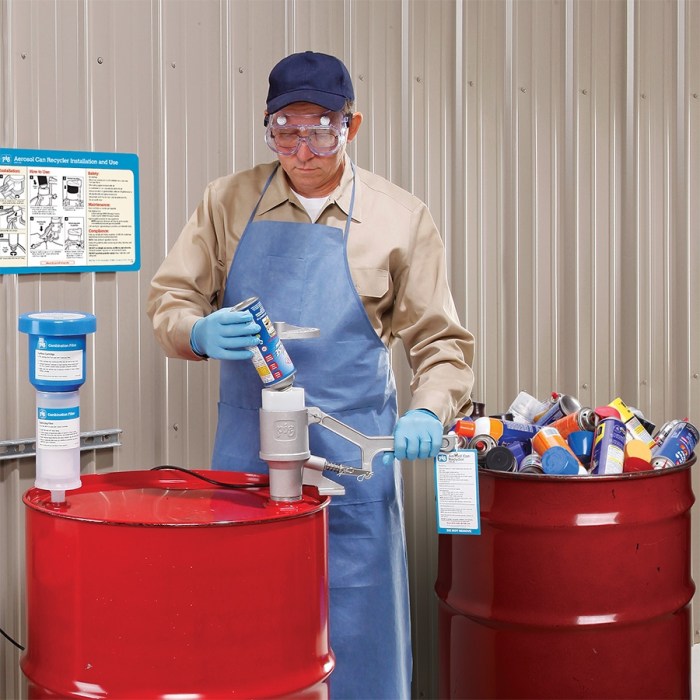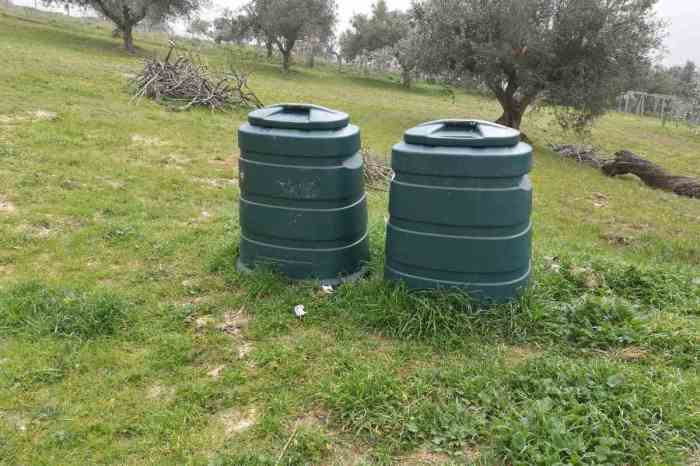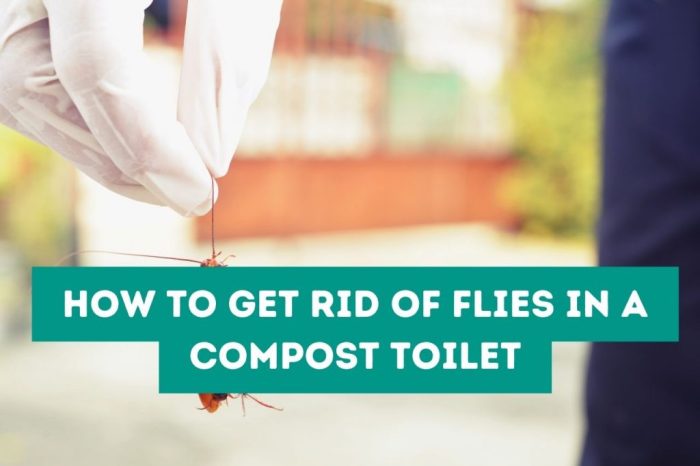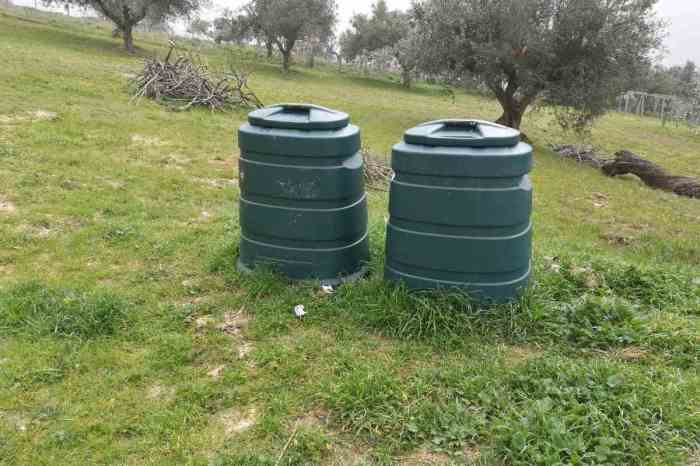Dispose of Aerosol Cans: This comprehensive guide explores the essential steps for proper aerosol can disposal, from understanding the environmental impact to navigating the complexities of recycling and legal regulations. We’ll delve into everything from household aerosols to industrial applications, offering practical advice and actionable strategies for responsible disposal.
Proper aerosol disposal is crucial for environmental protection. Aerosol cans contain various chemicals, and improper disposal can contaminate soil, water, and air. Understanding the risks associated with different aerosol types, and the specific disposal methods for each, is vital. This guide provides a detailed overview of safe practices and the regulations that govern aerosol disposal.
Environmental Impact of Aerosol Disposal
Improper disposal of aerosol cans poses a significant threat to the environment. These seemingly innocuous containers, used for everything from hairspray to cleaning products, often contain harmful chemicals that can contaminate soil, water, and air if not managed responsibly. The consequences of mishandling these products can range from localized pollution to global-scale environmental damage.Aerosol cans, despite their small size, hold a surprisingly potent environmental threat when not disposed of correctly.
Improper disposal leads to the release of various harmful substances into the environment, impacting ecosystems and human health. The chemicals within these cans, whether propellants or other components, can leach into the surrounding environment, causing long-term damage.
Environmental Risks of Improper Disposal
Improper disposal of aerosol cans leads to several environmental risks. These cans, if not recycled or disposed of properly, can contaminate the soil, water, and air, potentially harming wildlife and human health. Leaks and breakage from mishandled disposal can release harmful chemicals, impacting local ecosystems.
Impact on Soil, Water, and Air Quality
Aerosol components can leach into the soil, contaminating it with various chemicals. This can affect plant growth and potentially introduce toxins into the food chain. Runoff from improperly disposed-of cans can contaminate water sources, impacting aquatic life and potentially posing risks to human health. Moreover, the release of volatile organic compounds (VOCs) and other gases from aerosol cans can contribute to air pollution, affecting respiratory health and overall air quality.
For example, improperly disposed of paint aerosols can leach harmful solvents into the soil, impacting the health of plants and potentially entering the water table.
Role of Different Aerosol Types in Environmental Harm
Different types of aerosols pose varying degrees of environmental risk. Refrigerants, used in some aerosols, can contribute to the depletion of the ozone layer if released into the atmosphere. Propellants, often used to create the spray effect, can also have varying degrees of toxicity and impact on air quality. For example, certain refrigerants used in aerosols can contribute significantly to global warming, while others can damage the ozone layer, leading to increased UV radiation exposure.
Propellants like chlorofluorocarbons (CFCs) have been phased out due to their damaging effects on the ozone layer.
Comparison of Environmental Effects of Different Aerosol Can Materials
| Material | Environmental Impact |
|---|---|
| Aluminum | Generally considered a recyclable and less environmentally harmful material. Aluminum cans can be easily recycled, minimizing the impact on landfills. However, aluminum production itself does have environmental consequences, including energy consumption and potential pollution. |
| Steel | Steel is another recyclable material, but its production can have a higher environmental impact compared to aluminum, due to the use of iron ore and other resources. Proper disposal and recycling are essential to minimize this impact. |
Different aerosol can materials exhibit varying degrees of environmental impact. Aluminum is typically seen as a more sustainable option due to its recyclability. Steel, while also recyclable, may have a slightly higher production footprint. Both materials, when disposed of improperly, can contribute to environmental contamination.
Safe Disposal Methods
Proper disposal of aerosol cans is crucial for minimizing environmental harm and ensuring personal safety. Incorrect handling can lead to the release of harmful substances into the atmosphere and soil, potentially contaminating water sources and harming wildlife. By understanding and practicing safe disposal methods, we can contribute to a cleaner and healthier environment.Aerosol can disposal involves a multi-faceted approach encompassing responsible recycling programs, designated collection points, and careful handling procedures.
Different regions may have varying regulations and programs, making a standardized approach essential for ensuring responsible management of these items.
Recycling Programs
Understanding the different recycling programs available is essential for proper disposal. Recycling programs vary in their scope, effectiveness, and the types of aerosols they accept. Some programs focus solely on specific types of aerosols, like those containing propellants or refrigerants, while others are more comprehensive.
- Many municipalities offer curbside recycling programs that accept certain types of aerosol cans. These programs often have specific guidelines regarding the preparation and handling of the cans for recycling. For example, some programs require emptying the contents of the can, while others might only accept empty aerosol containers. Always check with your local recycling center for detailed guidelines.
Properly disposing of aerosol cans is crucial for environmental protection. Speaking of environmental consciousness, I was totally blown away by Liam Gallagher’s performance of two songs on watch liam gallagher perform 2 songs on colbert. It got me thinking about how important responsible waste management is, and that extends to all kinds of containers, not just aerosol cans.
So, remember to recycle or dispose of those aerosol cans correctly to keep our planet healthy.
- Specialized recycling centers often handle a broader range of aerosol types. These centers frequently employ sophisticated techniques to extract and recover valuable materials from the cans, maximizing the recycling process and reducing waste.
- Some companies have their own recycling programs for their specific aerosol products. This often involves returning the empty cans to the company for proper disposal and recycling. This ensures the responsible handling of specific products and can lead to a more streamlined process.
Designated Collection Points
Identifying and utilizing designated collection points for aerosol cans is a vital step in the process. These points are strategically located to facilitate the collection and proper handling of these materials. Understanding the procedure for taking aerosols to these points is critical for effective recycling and waste management.
- Locate the nearest designated collection point. Often, local government websites or community recycling centers provide a directory of these points. This directory should detail the location, hours of operation, and any specific guidelines for aerosol can disposal.
- Ensure the aerosol can is properly prepared. This usually involves emptying the contents, removing the valve, and ensuring the can is clean and dry. Proper preparation minimizes risks and enhances the efficiency of the recycling process.
- Follow any specific instructions provided by the collection point. These instructions might include the appropriate containers for disposing of the can or specific dates for designated collection.
Best Practices by Region
Different regions may have specific guidelines for aerosol can disposal. This table summarizes best practices for various regions, highlighting the nuances in recycling programs and collection points.
| Region | Best Practices |
|---|---|
| North America | Many municipalities offer curbside recycling programs for certain aerosol types. Always check local guidelines and contact your recycling center for specifics. |
| Europe | Recycling infrastructure is generally well-developed. Specific guidelines for aerosols often vary by country. Research local recycling centers for details. |
| Asia | Recycling programs for aerosols vary widely across countries. Specific requirements and collection points need to be researched based on the location. |
Legal Regulations and Guidelines: Dispose Of Aerosol Cans
Navigating the world of aerosol can disposal can feel like navigating a maze of regulations. Different jurisdictions have varying rules and penalties for improper disposal, making it crucial to understand the legal landscape. Knowing these regulations empowers both businesses and individuals to handle aerosol can disposal responsibly and avoid potential fines or legal issues.Understanding the legal framework surrounding aerosol can disposal is essential for responsible environmental stewardship.
Compliance with these regulations protects public health and the environment by minimizing the risks associated with improper handling and disposal. Different levels of government—local, state, and federal—often have their own regulations, which can overlap and sometimes create inconsistencies.
Regulations Surrounding Aerosol Can Disposal
Local, state, and federal regulations often dictate how aerosol cans should be collected, transported, and ultimately disposed of. These regulations aim to prevent environmental contamination and ensure safe handling practices. The specific rules vary considerably, depending on the location and the specific type of aerosol.
Thinking about properly disposing of aerosol cans? It’s a surprisingly important environmental task, especially when you consider the impact of all those cans on our planet. While we’re on the topic of important things, did you hear about the amazing Lizzo documentary coming to HBO Max? lizzo documentary for hbo max announced is a must-watch, but before you go binge-watching, make sure you’re properly disposing of those aerosol cans! Recycle them responsibly, and help keep our planet healthy.
Examples of Local, State, and Federal Laws
Numerous local, state, and federal regulations address aerosol can disposal. These laws typically mandate the use of specific collection methods, designated disposal facilities, and proper labeling of containers. For example, some localities might require businesses to use specialized recycling programs for aerosol cans containing specific chemicals, while others may impose strict rules on the handling of flammable aerosols.
State regulations may specify requirements for the proper labeling of hazardous materials within the aerosol containers. Federal regulations might cover the transportation of aerosol cans across state lines, addressing safety and labeling standards for interstate commerce. These regulations are crucial for preventing environmental damage and ensuring public safety.
Penalties for Improper Disposal
Improper aerosol can disposal can result in penalties ranging from fines to criminal charges, depending on the severity of the violation and the specific jurisdiction. Penalties for individuals or businesses violating regulations vary greatly. For instance, a local ordinance might fine an individual for improper disposal of aerosol cans at a public park, while a state law might impose substantial fines on businesses that violate aerosol can recycling regulations.
Criminal charges might be levied in cases of significant environmental damage or deliberate disregard for safety regulations.
Legal Responsibilities of Businesses and Individuals
Businesses and individuals have distinct legal responsibilities concerning aerosol can disposal. Businesses handling large quantities of aerosols have a greater responsibility to comply with stringent regulations, often including adherence to specific collection and recycling programs. Individuals, while generally responsible for proper disposal at household levels, might face penalties for improper disposal in public areas. A thorough understanding of the relevant regulations is essential for both.
Table of Legal Implications
| Violation | Legal Implications |
|---|---|
| Improper disposal of aerosols in public spaces | Potential fines, community service, or other penalties as determined by local ordinances. |
| Failure to comply with hazardous waste regulations for aerosols | Significant fines, legal action, and potential criminal charges. |
| Unauthorized transportation of aerosols across state lines | Fines, legal penalties, and potential seizure of aerosols. |
| Failure to comply with recycling regulations for aerosols | Fines, legal penalties, and possible closure of business operations (in the case of businesses). |
Household Aerosol Disposal
Proper disposal of household aerosols is crucial for environmental protection and personal safety. Many common household items, from hairspray to cleaning solutions, are packaged in aerosol cans. Improper handling and disposal can lead to environmental contamination and potential health hazards. This section will delve into the specifics of safe aerosol disposal practices for common household items.Household aerosols encompass a wide range of products, each posing unique disposal challenges.
Understanding the specific composition and potential risks associated with different types of aerosols is key to implementing safe disposal procedures. From the familiar spray cans to less common products, responsible handling and disposal are vital to minimize harm to both the environment and human health.
Common Household Aerosols
Household aerosols contain various substances, each requiring specific handling and disposal procedures. Common examples include hairspray, paints, cleaning products, and even some types of food items. The diversity of materials within these containers necessitates a comprehensive approach to disposal.
Safe Disposal Methods for Household Aerosols
Proper disposal methods for household aerosols vary depending on the product’s composition. Generally, it’s essential to ensure the can is completely empty before disposal. This often involves using the product until the can is practically empty. Once empty, the can should be rinsed to remove any remaining residue. Always check the specific instructions on the product label for detailed guidance.
Do’s and Don’ts for Proper Disposal
- Do empty the aerosol can completely before disposal. Residual product can cause leakage and environmental contamination.
- Do carefully read the label for specific instructions regarding disposal. Product-specific instructions are crucial for safe and environmentally sound practices.
- Do dispose of aerosols in designated recycling bins or collection centers. These facilities are equipped to handle the specialized needs of aerosol disposal.
- Do avoid puncturing or crushing aerosol cans, as this can release hazardous materials into the environment.
- Don’t mix different types of aerosols in a single container. Chemical reactions between incompatible products can create dangerous fumes and cause leaks.
- Don’t dispose of aerosols in regular trash bins. This can lead to contamination of the waste stream and potential environmental hazards.
- Don’t attempt to reuse aerosol cans. Contaminated or damaged cans can release hazardous materials and pose a risk.
Risks of Mixing Different Types of Aerosols
Mixing different types of aerosols can lead to unpredictable and potentially hazardous chemical reactions. Incompatibility between substances can produce toxic fumes or even cause explosions. Thorough research and adherence to specific disposal instructions are vital to prevent such incidents. For instance, mixing cleaning solutions containing ammonia with aerosols containing chlorine can produce harmful fumes.
Table of Household Aerosols and Their Proper Disposal
| Aerosol Type | Proper Disposal Method |
|---|---|
| Hairspray | Empty can completely, rinse, dispose in designated recycling bins. |
| Paint | Empty can completely, rinse, dispose in designated paint recycling program or hazardous waste collection center. |
| Cleaning products (e.g., degreasers, disinfectants) | Empty can completely, rinse, dispose in designated hazardous waste collection center. |
| Aerosol-packaged foods (e.g., whipped cream) | Follow manufacturer’s instructions; typically, empty cans are recyclable. |
Industrial Aerosol Disposal
Industrial aerosol disposal presents unique challenges compared to household disposal, demanding specialized handling procedures and adhering to strict regulations. The composition of industrial aerosols, often containing hazardous materials like refrigerants and solvents, requires careful consideration to minimize environmental impact and worker safety risks. Proper disposal methods are critical for preventing contamination of soil, water, and air.Industrial settings utilize a wide array of aerosol products, each with its own potential hazards.
This necessitates a nuanced approach to disposal, differentiating between the specific types of aerosols and their corresponding disposal protocols. This meticulous process ensures responsible handling of these potentially harmful substances.
Unique Disposal Challenges for Industrial Aerosols
Industrial aerosols often contain volatile organic compounds (VOCs), heavy metals, or other hazardous substances. Improper disposal can lead to significant environmental contamination and health risks. Furthermore, industrial quantities of these materials necessitate specialized equipment and trained personnel for safe handling and transport. The sheer volume of waste generated in industrial settings demands efficient and environmentally sound disposal methods.
Properly disposing of aerosol cans is crucial for environmental health, and it’s a small step we can all take. While you’re listening to the latest tunes from The Dreams, check out their new album “IV Play,” featuring Beyonce, Jay-Z, Kelly Rowland, Pusha T, and more! listen the dreams new album iv play featuring beyonce jay z kelly rowland pusha t more This fantastic album is a great soundtrack to keep you motivated while you responsibly recycle or dispose of those aerosol cans you’ve used up.
Just remember to always check local guidelines for proper disposal methods.
Specific Handling Procedures for Industrial Aerosols
Specific handling procedures are paramount to ensure the safety of workers and the environment. Refrigerants, for instance, require specialized containment systems to prevent leaks and releases into the atmosphere. Properly identifying the type of refrigerant is crucial for selecting the appropriate disposal method. Solvents, similarly, demand careful handling to prevent chemical reactions and contamination. Proper segregation and labeling of different types of industrial aerosols are essential for effective disposal.
Examples of Different Industrial Aerosol Types and Their Specific Disposal Needs
Various industrial applications utilize different types of aerosols. For example, refrigerants used in industrial cooling systems often require recycling or recovery to minimize environmental impact. Specialized equipment, such as recovery units, is crucial for this process. Aerosol paints used in manufacturing necessitate proper disposal to prevent the release of volatile organic compounds. Specific disposal methods may involve incineration or specialized recycling processes.
Other examples include solvents, degreasing agents, and specialized cleaning products. The disposal needs of each type of industrial aerosol depend on its composition and the regulations in place.
Table Outlining Required Safety Equipment for Handling and Disposing of Industrial Aerosols
| Aerosol Type | Safety Equipment |
|---|---|
| Refrigerants | Gloves, respirators (appropriate to refrigerant type), safety glasses, protective clothing, spill containment equipment |
| Solvents | Gloves (chemical-resistant), respirators (appropriate to solvent type), safety glasses, protective clothing, spill containment equipment, ventilation |
| Aerosol Paints | Gloves (chemical-resistant), respirators (appropriate to paint type), safety glasses, protective clothing, ventilation, dust masks |
| Other Industrial Aerosols | Consult Material Safety Data Sheet (MSDS) for specific requirements |
This table highlights the fundamental safety equipment needed for handling and disposing of different types of industrial aerosols. Specific requirements may vary based on the precise composition of the aerosol and local regulations. Always prioritize worker safety and environmental protection.
Specific Regulations and Guidelines for Industrial Aerosol Disposal, Dispose of Aerosol Cans
Strict regulations govern the disposal of industrial aerosols. Environmental Protection Agency (EPA) guidelines, for instance, Artikel specific requirements for handling and disposing of hazardous materials. These regulations often mandate proper labeling, documentation, and transportation procedures. Compliance with local, state, and federal regulations is essential for responsible industrial aerosol disposal. Furthermore, adherence to specific guidelines for hazardous waste management is critical for preventing environmental damage and legal repercussions.
Recycling and Reuse Programs
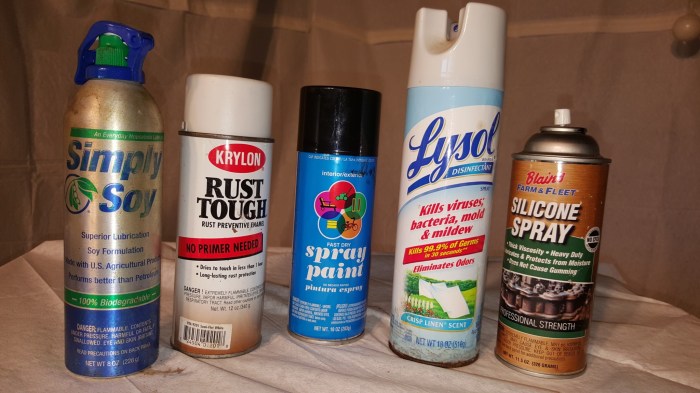
Aerosol cans, while convenient, contribute significantly to waste if not properly managed. Recycling and reuse programs offer a crucial solution to reduce the environmental impact of these containers and promote resource conservation. These programs often involve dedicated collection systems, material recovery processes, and partnerships with businesses and communities.Existing recycling and reuse programs for aerosol cans vary widely depending on location and the types of aerosols involved.
While some regions have established robust programs, others are still developing initiatives. These efforts aim to recover valuable materials from discarded aerosol cans, reducing landfill burden and promoting sustainability.
Existing Recycling Programs
Aerosol recycling programs are not universally available, and their scope can range from specific types of aerosols to entire categories of containers. The success of these programs hinges on consumer participation and the availability of dedicated collection points.
- Many municipalities and waste management companies now offer aerosol recycling programs. These programs often collect cans containing specific substances, such as those with propellants, paints, or cleaning agents. The collected materials are processed for material recovery, often separating the metal components from the other materials. This separation is vital for proper recycling and preventing contamination.
- Specialized companies often partner with businesses to collect and recycle aerosol cans from various industries. These businesses, such as paint retailers, auto parts shops, or cleaning product distributors, might have their own dedicated recycling systems or participate in broader collection programs.
Benefits of Aerosol Recycling
Recycling aerosol cans provides numerous environmental and economic advantages.
- Reduced Landfill Burden: Recycling reduces the volume of waste sent to landfills, conserving valuable space and minimizing environmental pollution. This is crucial, as landfills can release harmful greenhouse gases and leach contaminants into the surrounding environment.
- Conservation of Natural Resources: Recycling aluminum and other metals from aerosol cans conserves natural resources. Producing these materials from raw materials requires significantly more energy and resources than recycling existing materials. This conservation effort is a key component of sustainable practices.
- Economic Benefits: Recycling generates economic benefits through the creation of jobs in recycling facilities and the recovery of valuable materials that can be reused in manufacturing.
Material Recovery Process
The material recovery process for recycled aerosol cans typically involves several stages.
- Collection: Dedicated collection points, such as drop-off centers or curbside programs, are crucial for efficient collection of used aerosol cans. The collection process often depends on the type of aerosol and the local regulations.
- Sorting: Recycled aerosol cans are sorted based on material composition and often separated from non-recyclable materials. This meticulous sorting ensures that the material recovery process is efficient and avoids contamination of the recycled materials.
- Processing: The sorted materials undergo processing, which might involve shredding, melting, or other techniques to extract the valuable components, such as aluminum, steel, and plastics.
Examples of Companies Offering Aerosol Recycling
Many companies and organizations participate in or support aerosol recycling programs.
- Paint retailers often have programs for recycling paint cans, including those containing aerosols. These programs ensure that paint-related waste is properly managed and that the valuable materials are recovered for reuse.
- Specialized aerosol recycling companies often provide collection services for various types of aerosol cans. These companies frequently partner with industries to streamline the recycling process.
Recycling Program Examples
| Program Name | Contact Information |
|---|---|
| Local Waste Management Authority | (Phone Number) (Website) |
| ABC Aerosol Recycling Company | (Phone Number) (Website) |
| XYZ Paint Store Recycling Program | (Phone Number) (Website) |
Public Awareness Campaigns
Spreading awareness about proper aerosol can disposal is crucial for environmental protection. Effective campaigns can significantly impact individual behavior and reduce the negative environmental effects of improper disposal. This involves educating the public on the risks associated with improper disposal and promoting responsible practices.Educating the public on the impact of aerosol can disposal is essential to fostering responsible practices.
By highlighting the environmental consequences, individuals can understand the importance of their actions. Effective campaigns leverage various channels to reach a wide audience, from community events to online platforms.
Strategies for Raising Public Awareness
Effective strategies for raising public awareness include community events, partnerships with schools, and targeted advertising campaigns. These efforts should highlight the benefits of proper aerosol disposal, such as reducing pollution and conserving resources. By making the issue relatable and tangible, campaigns can motivate individuals to change their habits.
Educational Materials and Campaigns
Educational materials play a key role in promoting responsible aerosol disposal. Informative brochures, posters, and online resources can provide clear guidance on proper disposal methods. These materials should be easily accessible and visually engaging, making the information easily understandable and memorable. The information should clearly explain the environmental impacts of improper disposal and highlight the benefits of responsible practices.
Examples of Informative Brochures or Posters
- Brochure Example 1: A brochure titled “Aerosol Cans: Recycling Right” could feature vibrant images of recycling symbols and clear instructions on how to properly dispose of different types of aerosol cans. It could also include a section on the benefits of recycling, highlighting the reduced landfill waste and the conservation of natural resources.
- Poster Example 1: A poster designed for public spaces could use a bold graphic of an aerosol can being recycled, with text emphasizing the importance of responsible disposal. It could include a QR code linking to a dedicated webpage with more detailed information.
- Poster Example 2: A poster targeting young people could use a cartoon character to explain the process of aerosol can recycling, making the information fun and accessible.
Comparison of Public Awareness Strategies
| Strategy | Effectiveness Factors | Potential Limitations |
|---|---|---|
| Community Events | Direct engagement, face-to-face interaction, hands-on demonstrations | Limited reach, logistical challenges, weather dependency |
| School Partnerships | Reaching younger generations, embedding responsible practices early | Resource constraints, curriculum integration challenges |
| Targeted Advertising Campaigns | Wide reach, potential for impactful messaging | Cost implications, message saturation, potential for misinterpretation |
| Online Resources | Accessibility, broad reach, continuous engagement | Maintaining user engagement, ensuring accuracy and reliability of information |
Community Engagement in Aerosol Can Recycling
Engaging communities in aerosol can recycling initiatives can foster a sense of shared responsibility and ownership. Local organizations, businesses, and residents can collaborate to establish collection points and recycling programs. Community-based campaigns can create a positive feedback loop where individuals feel empowered to participate in environmental stewardship.
Alternative Solutions
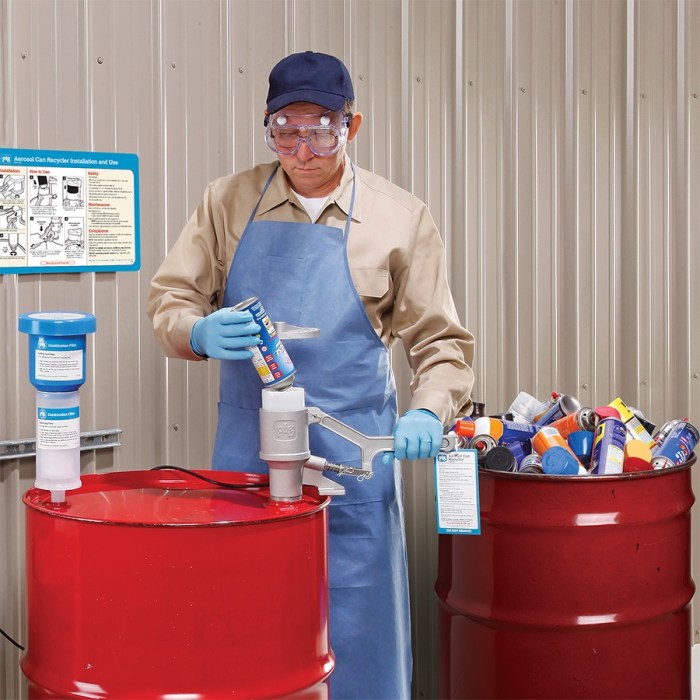
Beyond the crucial steps of responsible disposal, innovative solutions are emerging to minimize the environmental impact of aerosol cans. These alternatives address the inherent challenges of conventional aerosol packaging, focusing on sustainable materials, improved design, and entirely new approaches. This exploration of alternative solutions offers a glimpse into a future where aerosol products can coexist with a healthy planet.
Exploring New Packaging Materials
A significant shift towards eco-friendly alternatives involves replacing traditional materials like petroleum-based plastics. Bio-based plastics derived from renewable resources like corn starch or sugarcane are gaining traction. These materials offer a more sustainable pathway, reducing reliance on finite fossil fuels and minimizing the carbon footprint. Additionally, advancements in polymer science are leading to biodegradable and compostable plastics, allowing for a more complete lifecycle management of aerosol packaging.
The challenge lies in ensuring these alternatives maintain the necessary structural integrity and performance characteristics of conventional aerosols.
Eco-Friendly Aerosol Alternatives
Several innovative approaches are being developed to replace traditional aerosol systems. One promising avenue involves the development of solid-state aerosol systems, eliminating the need for pressurized propellants. These systems use different mechanisms, like solid CO2 or environmentally friendly propellants, to dispense the product. Another example involves pump-based dispensers, which offer a more controlled release compared to pressurized options, minimizing waste and potentially enabling more targeted product application.
Ultimately, these alternative solutions are driven by a desire for environmentally friendly dispensing methods.
Aerosol Can Design Improvements for Recycling
Designing aerosol cans for easier recycling is a crucial step. This involves incorporating clear labeling, using readily recyclable materials, and developing more modular can designs. These designs can improve the efficiency of the recycling process, ensuring the valuable components are recovered for reuse. For instance, separating the can body from the valve during recycling can allow for better material recovery and reduce contamination.
The design should also focus on minimizing the number of different materials used, to streamline the sorting and recycling process.
Benefits and Drawbacks of Different Aerosol Alternatives
| Alternative | Benefits | Drawbacks |
|---|---|---|
| Bio-based plastics | Renewable resource, reduced carbon footprint | Potentially higher cost, might not be as durable as traditional plastics |
| Solid-state systems | Eliminates need for propellants, potentially more efficient | May require specialized dispensing mechanisms, cost of technology development |
| Pump-based systems | Controlled release, less propellant use | Lower dispensing capacity, might not be suitable for all products |
Different alternatives present varying trade-offs. Bio-based plastics offer a significant environmental benefit but might come with a higher price tag. Solid-state systems, while environmentally appealing, could face hurdles in widespread adoption due to technological constraints. Pump-based systems, on the other hand, provide a more controlled release but may have limitations in dispensing volume. Careful consideration of these trade-offs is essential in selecting the most suitable alternative for a specific product.
Final Conclusion
In conclusion, responsible aerosol disposal extends beyond simple recycling. It involves understanding the environmental and legal implications of improper disposal, and adopting safe practices for both household and industrial applications. This guide has provided a thorough overview, encompassing various aspects of aerosol management. By adopting the recommendations Artikeld here, we can all contribute to a cleaner environment and uphold responsible practices.
